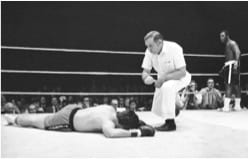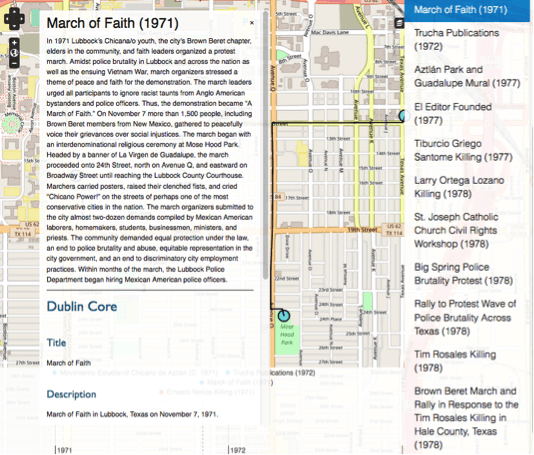Before California’s gubernatorial primary election, four Democrats and two Republicans faced off in a televised debate on January 25, 2018. Moderators Jorge Ramos and Ilia Caldéron asked candidates Antonio Villaraigosa (D), Delaine Eastin (D), Gavin Newsom (D), John Chiang (D), John Cox (R), and Travis Allen (R), about many issues, including immigration in general and in particular—they asked questions on sexual assault against undocumented women, on Deferred Action for Childhood Arrivals (DACA), and on immigrant farm work. Candidates Chiang and Cox alluded to the Bracero Program, a guest-worker program enacted between 1942-1964, during the debate. The discussion demonstrated how the program is remembered and how guest workers should be treated. The comments suggest the United States should remember workers’ hardships, so they are treated humanely when legislators propose immigration policies.
A fourteen-year old, Benjamín Zepeda, asked the candidates, “How can you help families like mine that are scared to be separated due to deportation?” this prompted Chiang’s indirect reference to the Bracero Program. As he highlighted immigrants’ contribution to California’s development, he recalled that during World War II the nation invited Mexicans to labor in our farms. Acknowledging the country’s failure to advocate for fully just immigration policies, he declared that our economic future would be shaped by immigrants. In recalling braceros’ contributions, the candidate pledged his support for immigrants because our country should represent dignity, decency, and respect for all people. He accordingly vowed to solve such issues with all governors by pushing Washington D.C., to enact comprehensive immigration reform. Thus, Chiang’s comments alluded to the significance and importance of the Bracero Program. 1

Chiang’s statement referring to this country’s failure in advocating for just immigration policies had merit even in regard to the Bracero Program, whose resurrection is sometimes promoted as a solution to current immigration problems. The binational agreement originated when the agribusiness and railroad industries lobbied Congress for a guest-worker program. President Franklin Roosevelt subsequently signed an executive order which caused Mexico and the United States to create the Bracero Program from 1942-1951; Congress later extended the program from 1951 to 1964. Contracted Mexican workers, known as Braceros, traveled from their homes to migratory stations in Mexico before reaching the border. Then, they traveled from the stations to U.S. reception centers where they were formally contracted. Braceros were to be paid a minimum wage, provided with housing, given food, and promised a small pension from deducted funds in their paychecks.2
The program brought numerous laborers to the United States; however, there were not enough jobs for them, which led the applicants to take desperate measures. For example, on June 13th, 1958 a bracero bought a peer’s identity, so he could move up in the waiting list. Contracted by the Ventura County Citrus Growers Committee, the bracero, after his six-month contract, used the peer’s name again. Migratory officials, however, found that he was using the fraudulent identity. Thus, Mexicans who could not attain a contract through formal measures used such informal means and increasingly crossed the border as undocumented immigrants. The Eisenhower administration, subsequently, enacted Operation Wetback in 1954 which resulted in the deportation of over a million Mexicans. Mexican officials were upset at the deportations as they argued that the U.S. had invited workers to cross the border, then punished undocumented workers, instead of the employers who hired them.3
Moderator Ilia Caldéron later in the debate asked John Cox, “Do you know that more than 60% of the people harvesting fruits and veggies here in California are undocumented immigrants? Isn’t it pro-business to give them a legal status?” The candidate answered by sympathizing with Central Valley Farmers. According to Cox, the farmers advertised higher wages; however, they continued to endure labor shortages. The candidate then argued for a labor importation program, basically another Bracero Program already shown to be flawed. He claimed that Latinos came from dysfunctional and corrupt countries such as, Mexico, Honduras, Venezuela, and Guatemala. Cox continued by describing them as nations where special interests, cronies, and monopolists receive government favors. The candidate ended by stating that Latinos come to the United States because it is a country of laws. But some farmers’ actions during the program tell a different story.4

The Bracero Program demonstrated that the United States often acted as a nation without laws, as the government frequently served farmers’ interests despite written agreements. For example, in November 1942, a frost damaged pea crops in the Imperial Valley of California. At the time, braceros were contracted to harvest peas, but were instead ordered to tie carrots. In addition, farmers paid braceros and domestic workers six cents per bushel instead of the normal eight-cent piece rate which challenged the prevailing wage agreement in the program. Objecting against such “cheap” labor, discontented domestic workers organized a strike on January 9, 1943 advocating for the original rate. In response, the California Farm Labor Transportation Program and the Imperial Valley Farmers Association worked together to deport braceros who refused to be strikebreakers. Thus, forty workers were deported between January 9 and February 3. The tying season finished before the strike gathered momentum.5
The United States, nevertheless, continued to break laws. Before 1952, the U.S president and the Mexican government informally re-approved the Bracero Program. Once President Harry Truman signed Public Law No. 78, the program required Congress’s approval every two years. The next renewal was accordingly discussed in 1954. Although both countries had failed to come to an agreement in early 1954, U.S. Border Patrol officials encouraged Mexicans to cross the border under an undocumented status. Tony Gose, a resident from the Imperial Valley, verified this claim in a House Agriculture Committee report. On one occasion, he witnessed a Mexican official grab a former bracero to prevent him from being hired as an undocumented laborer. A U.S. official, however, in a tug of war fashion, grabbed the laborer in an attempt to take him from the Mexican agent. Finally, both governments after tense negotiations agreed on a new renewal in 1954.6

After the program, society has demonstrated that braceros have been remembered, but policymakers need to study their experiences more closely. Providing assistance for such study, the National Museum of American History has created the Bracero History Project to tell the complex history of braceros. Also, the Bracero Justice Movement has sought to recognize the exploitation and injustices guest workers faced, as well as to recuperate pensions and wages withheld from them. Policymakers should remember that braceros often found ways to alleviate the wrongs they experienced. They also developed agency when confronting state power in ways that might give politicians pause in promoting new guest worker programs As Mireya Loza argues in Defiant Braceros, braceros participated in deviance and defiance when they participated in the vice and sex industries along the border. Their shared leisure experiences gave them agency but also demonstrates that the importation of temporary male workers might be less preferable than admission of permanent residents in families.7
Policymakers, nevertheless, must agree that the United States and California was built on the backs of immigrants, that our country represents dignity, decency, and respect for all people, and that our nation should recognize and avoid repeating historical injustices when composing new immigration laws.
- Univision Noticias, “Forum with California’s gubernatorial candidates 2018.” YouTube video, 1:36:14, January 25, 2018, https://www.youtube.com/watch?v=RcWa-X0RxwA&t=2044s&index=13&list=WL. ↩
- Henry P. Anderson, The Bracero Program in California. (New York: Arno Press, 1976),43, 108. ↩
- Peter N. Kirstein, “Agribusiness, Labor and the Wetbacks: Truman’s Commission on Migratory Labor,” The Historian, vol. 40. no. 4 (1978): 651; Richard B. Craig, The Bracero Program Interest Groups and Foreign Policy (Austin: University of Texas Press, 1971), 4. ↩
- Univision Noticias, “Forum with California’s gubernatorial candidates 2018.” ↩
- Don Mitchell, They Saved the Crops: Labor, Landscape, and the Struggle Over Industrial Farming in Bracero-Era California (Athens: University of Georgia Press, 2012), 35-36; Warne D. Rasmussen, A History of The Emergency Farm Labor Supply Program 1943-47(Washington D.C., Agriculture Monograph No. 13, U.S. Department of Agriculture Bureau of Agricultural Economics, 1951), 202. ↩
- “Valley Hopes for Border Labor Pact,” Los Angeles Times, Jan. 1, 1954; “Violence Halts Wetback Crossing,” Los Angeles Times, Jan. 25, 1954; “Policy Shift Traps Mexican Farm Workers,” Los Angeles Times, Jan. 26, 1954; Robert S. Robinson, “Taking the Fair Deal to the Fields: Truman’s Commission on Migratory Labor, Public Law 78, and the Bracero Program, 1950-1952,” Agricultural History84, no. 3 (Summer-2010): 394-398.; House of Representatives, Committee on Agriculture, Mexican Farm Labor. 83rdCong., 1954, 67, 69. ↩
- Mireya Loza, Defiant Braceros: How Migrant Workers Fought for Racial Sexual and Political Freedom, (Chapel Hill: The University of North Carolina Press, 2016), 17, 173, 182. ↩






